And a Pied-billed Grebe with kleptoparasitic tendencies.
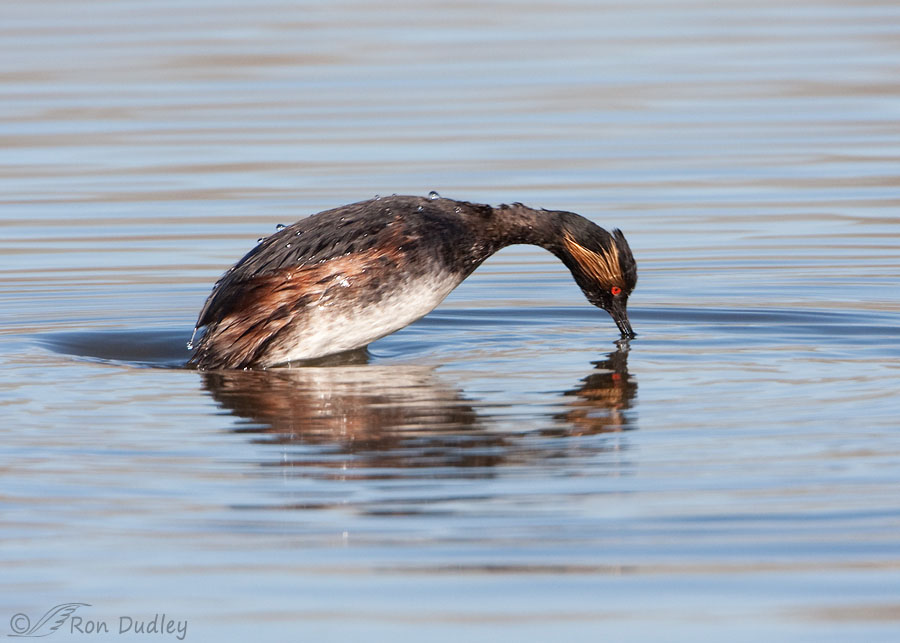
In my day I’ve watched and photographed countless numbers of Eared Grebes feeding, often from a distance on the Great Salt Lake but sometimes from very close up on fresh water ponds. They’ve always been feeding on insects or tiny crustaceans and used one of two feeding techniques.
One technique is to dive in order to search the bottom for food. If the water is very shallow their dive isn’t particularly energetic because they don’t have to get their buoyant body very far below the water’s surface. .
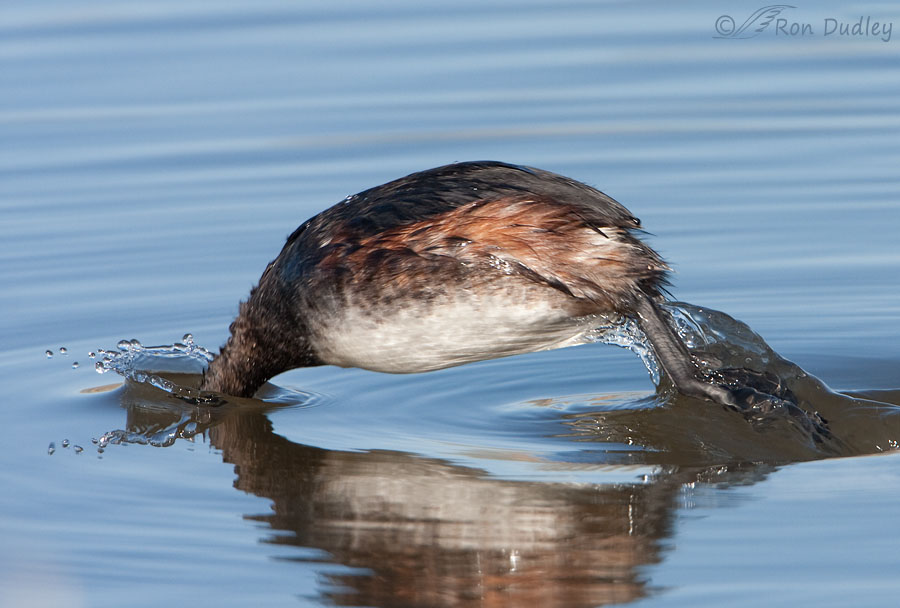
But when the water is a little deeper they’re required to jump higher off the surface and enter the water at a steeper angle in order to reach the substrate and search for food. When they dive for food around here they’re typically feeding on tiny insects or crustaceans on the muddy bottom when they’re on fresh water or they’re after brine shrimp near the sandy bottom the Great Salt Lake.
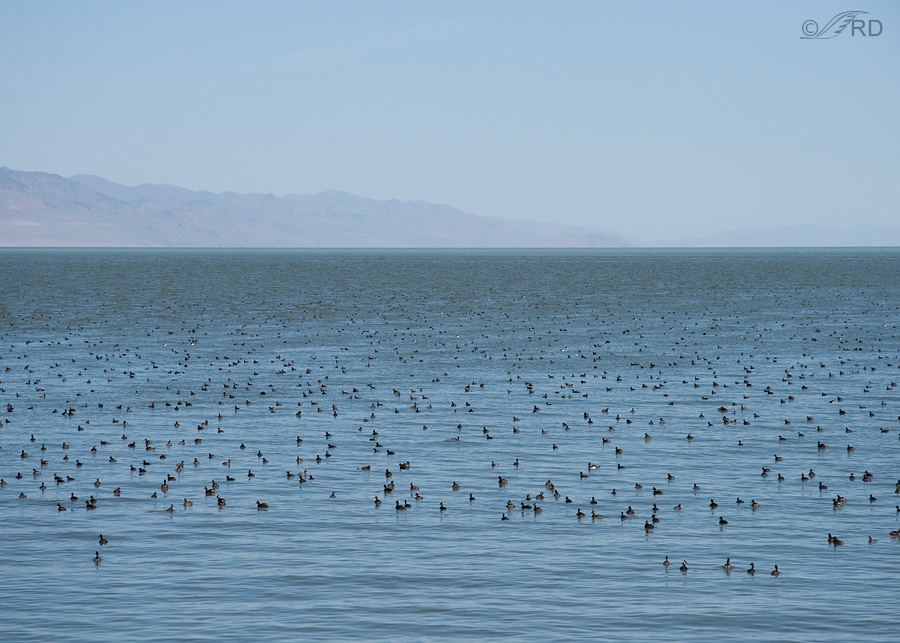
Up to 5 million Eared Grebes use the Great Salt Lake as a staging area during migration so at certain times of the year their numbers on the lake can be nothing short of mind-boggling. The grebes we see here, for as far as the eye can see, are resting on the surface between trips to the shallow bottom in search of the bountiful brine shrimp.
They’re essentially refilling their fuel tanks so they can continue their long migration.
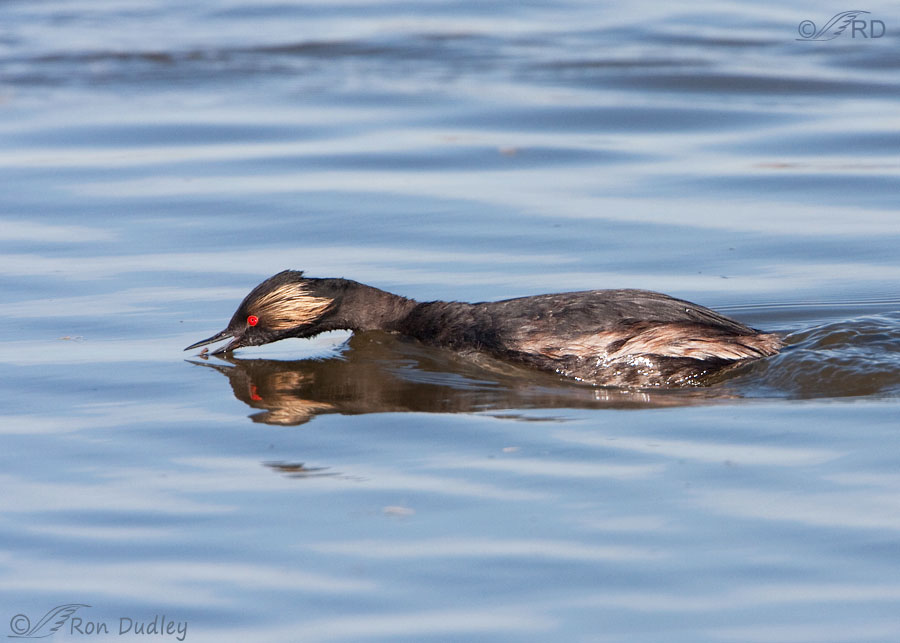
The second feeding technique I see is when the grebes dart across the water’s surface in pursuit of tiny floating insects, usually on fresh water but not always. This grebe is just about to gobble down a mosquito or possibly a midge it located on the surface of Farmington’s Glover Pond.
When I’ve observed them feeding in the past, whether they’re on fresh water or the highly saline Great Salt Lake, Eared Grebes have always been feeding on insects or tiny crustaceans – never on fish.
There aren’t any fish in the Great Salt Lake anyway, not at a salinity of about 13% in the south arm of the lake compared to 3.5% salt by weight in the typical ocean.
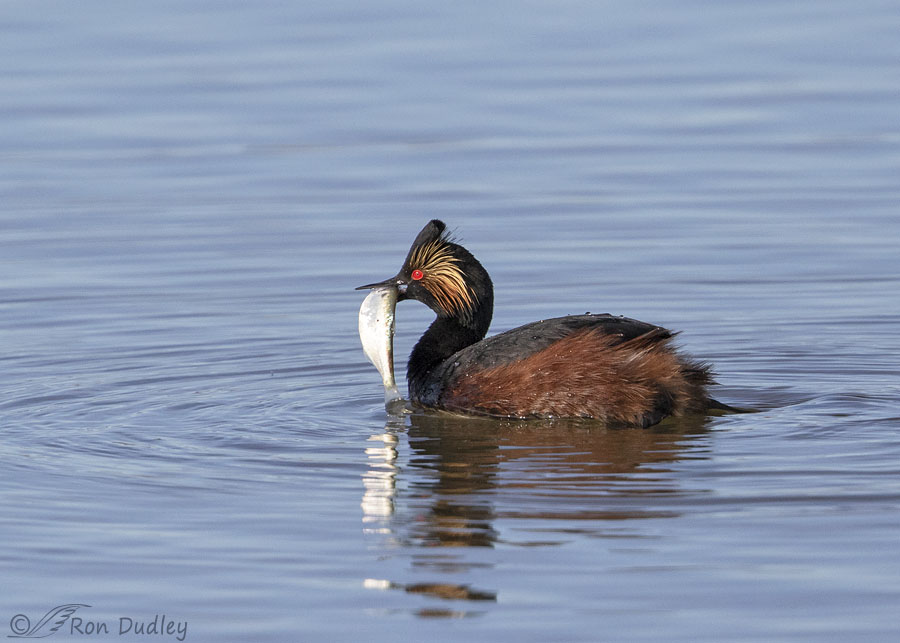
But I’ll be damned, three days ago when this Eared Grebe dove on a fresh water impoundment at Bear River MBR ‘he’ came up with a fish. First time I’ve ever seen that happen.
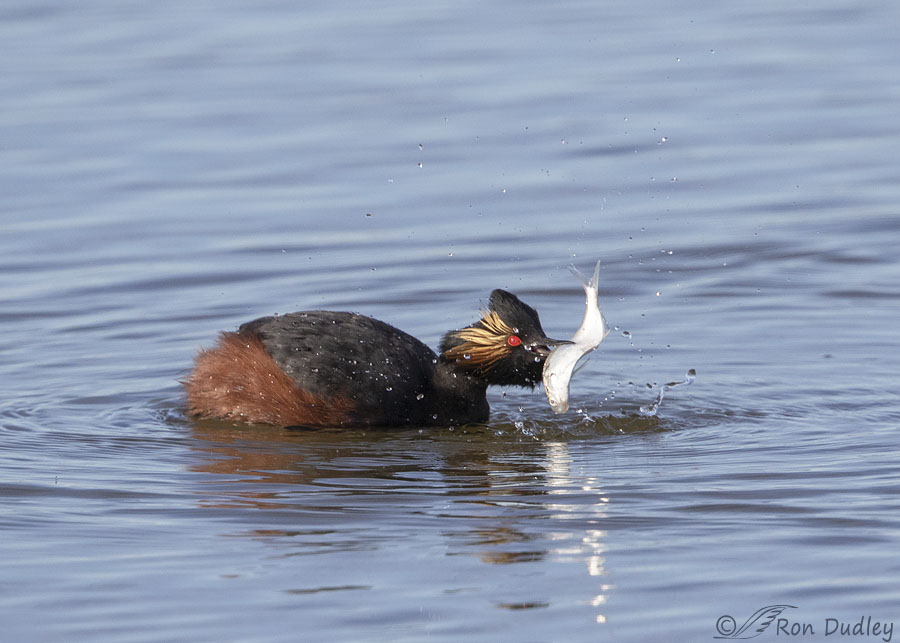
The small, pointedly sharp and very narrow bill of the Eared Grebe doesn’t seem to be designed for catching and eating fish so he…
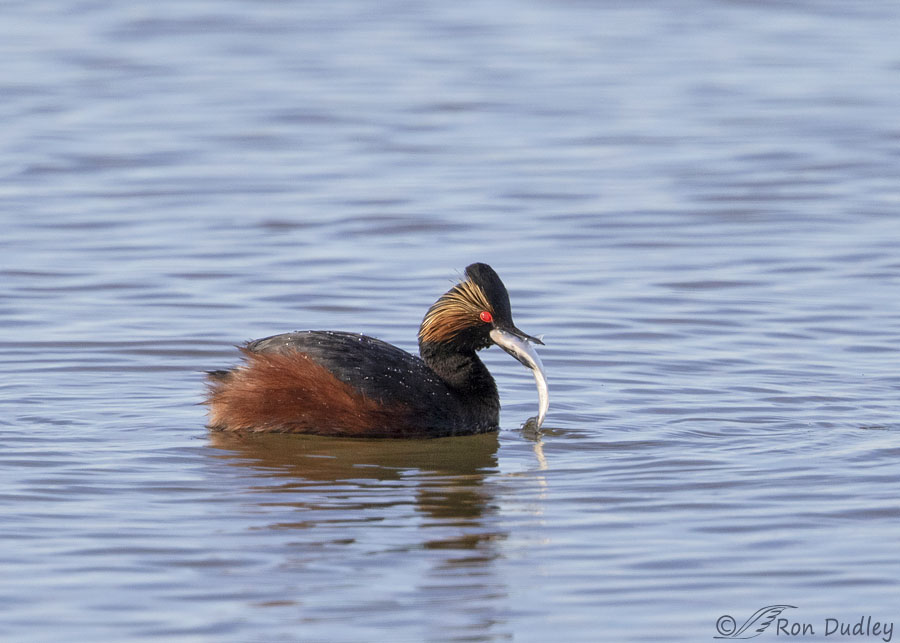
really struggled to get it down. While he was struggling he knew he was vulnerable to attack from some other bird near the shore who might try to swipe the fish so he continued to swim slowly away from the shore as he tried to swallow his unusually large prey.
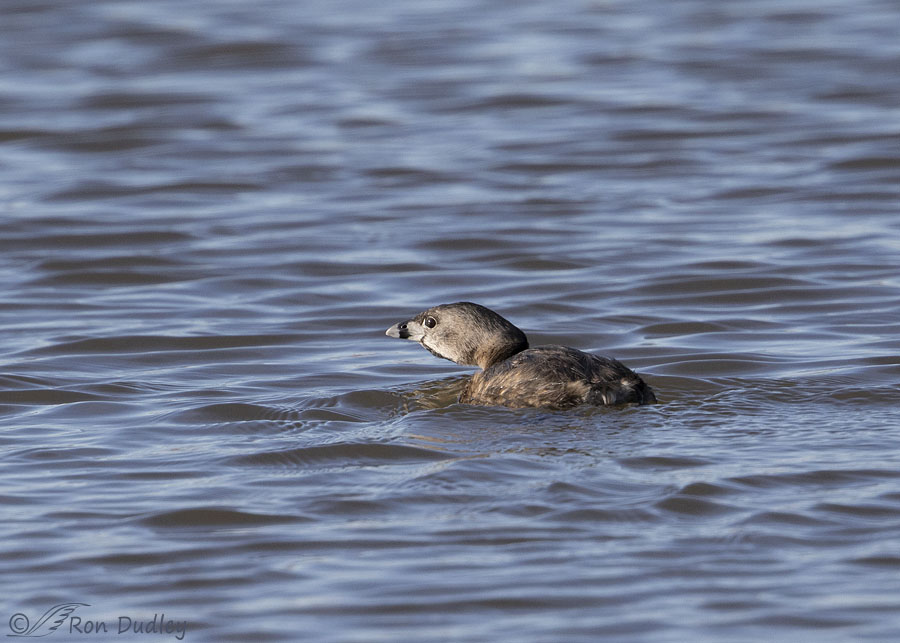
Sure enough, this Pied-billed Grebe approached him in a sneak attack and soon…
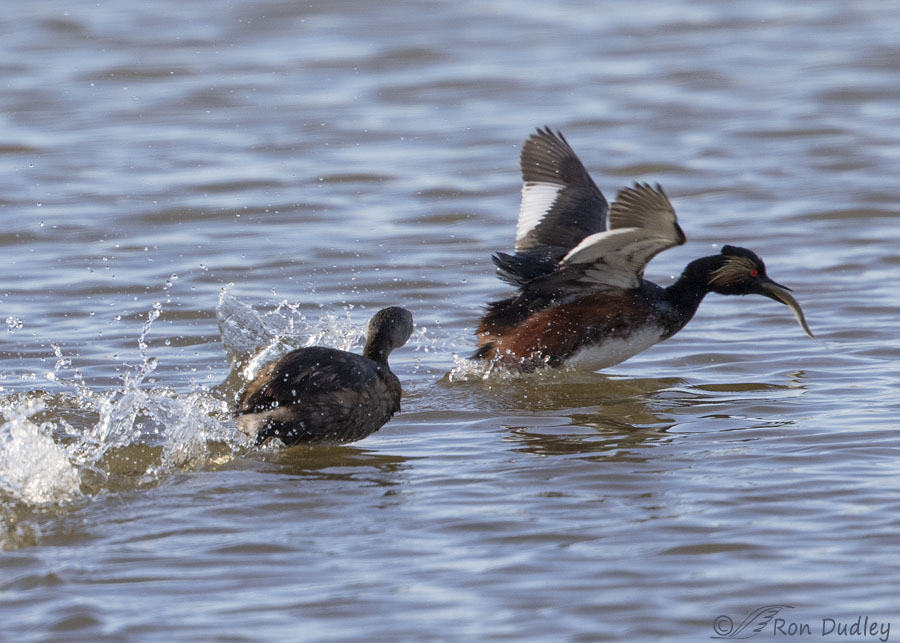
the chase was on. With the fish in his bill the Eared Grebe was at a defensive disadvantage so all he could do was skitter across the water and hope to…
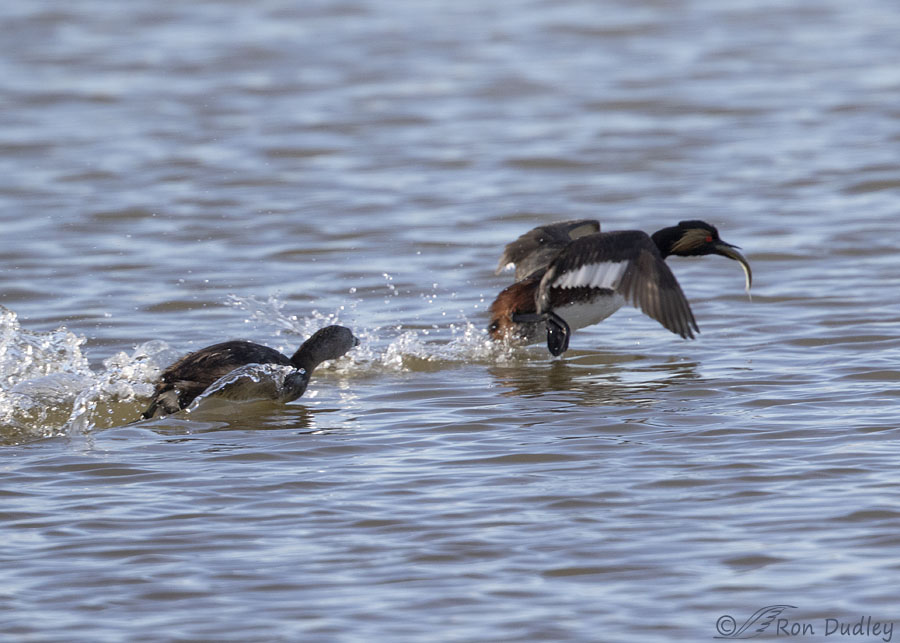
outrun his attacker. The chase was a long one but in the end the Eared Grebe escaped with his fish but by then he was so far away I never did see if he was eventually able to swallow it. Personally I have my doubts, but who knows…
When I arrived home I researched the diet of Eared Grebes and discovered that they actually are known to occasionally eat small fish but this was a first time for me.
Perhaps they do it more often in other areas where smaller fish are more often available. I dunno.
Ron


It always amazes me how they can swallow such big, prickly fish,,,,
Awesome photos! Just getting home and catching up, lots of obligations to others today. Including one last eared grebe.
April, thanks for the heads up about that Sandhill Crane today. And thanks for all you do, and it’s a lot, for birds.
It has got to the stage that I almost always quietly sneer when I see a definitive statement about animal behaviour.
That was one humungous meal for the grebe and I hope it did succeed in swallowing it. But wonder…
I know what you mean, EC.
I wouldn’t bet my shutter finger that he got it down but they’ve fooled me before. Often.
Wonderful description and interpretation of the behavior of these grebes. What a huge assembly of Eared Grebes1
Pretty impressive isn’t it Ken. You should see it in person – through a scope, binocs or a long lens.
Love the chase photos which you accurately predicted! Fun series Ron
“which you accurately predicted”
Kathleen, when I saw the Pied-billed’s head low on the water in that sneaky position I knew what was probably going to happen.
Ron, you are an excellent story teller and had me on the edge of my seat reading about this Grebe adventure. Thanks so much for sharing! With all the email I get, this is a rare one that I look forward to!
“With all the email I get, this is a rare one that I look forward to”
So nice to know. Thank you, Kellie.
Wow – mind-boggling is not an exaggeration for the Salt Lake photo. I am excited when I see four or five Eared Grebes together here. I have seen Pied-billed Grebes catch a fish like that and struggle for quite awhile before getting it down, but never saw an Eared with one. Very interesting and educational post.
Everett, when you look out over that many grebes you’re gobsmacked that that many of them even exist. And overjoyed.
I loved “Porcupine’s” last sentence. Curiosity has clearly been YOUR life’s
driver and I wonder how many people’s lives have benefited from your curiosity,
alone? Knowing that there will always be a surprise around the corner keeps
me going, and I find one in your blog almost every day… Just seeing these 2
birds head to tail makes me wonder “how can they BOTH be “grebes”– they
look so very different—so off I go to learn about them !
Interesting observation, Kris. Yes, just looking at bill shapes and sizes of Pied-billed, Eared and Western Grebes there’s quite a contrast. And then there’s the other traits that are so different among them.
Love this series and thanks for the continued education.
Good. Thanks, Elmer.
Neat! Don’t know who he’d get it down but at least in kept in to himself! The natural world is always surprising us – I love it!
The natural world is always surprising us – I love it! 
Thanks, Judy.
Great photos and interesting information on their feeding habits. Reminds me of what I cal the mantra of wildlife behavioral research. “Either they don’t do it, or they do do it, but we don’ see it.” I love knowing how much there is out there that we don’t know!
“I love knowing how much there is out there that we don’t know”
So do I, Porcupine. It makes life much more interesting when I’m in the field. And when I’m reviewing my images.
I love your documentary shots and the stories that go along with them. Your curiosity is contagious. Thanks for sharing these experiences.
“Your curiosity is contagious”
That’s just excellent to know. Thanks very much, Granny Pat.
Totally agree Granny Pat!! fascinating and well-photographed and well-told documentary!
Thank you, Terri.